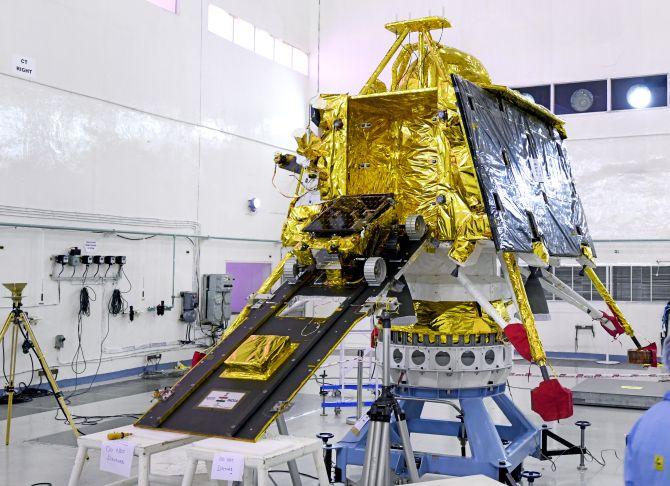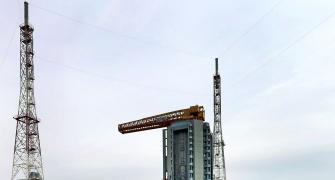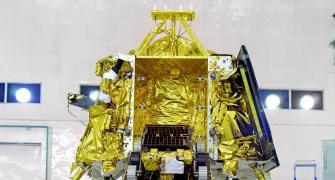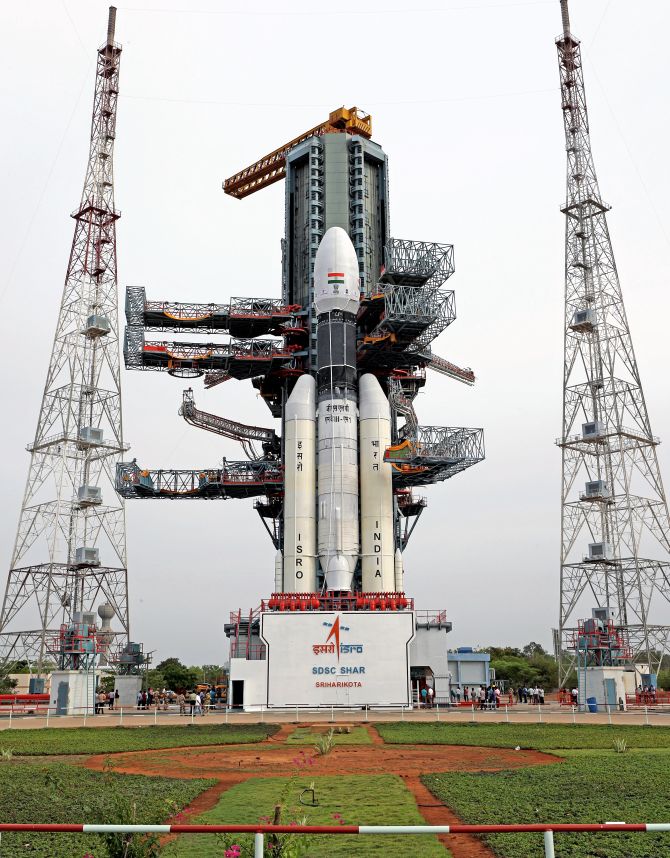
A few hours after Chandrayaan-2's landing module Vikram touches down on the Moon early Saturday, Rover 'Pragyaan' will emerge from the lander and roll out onto the lunar surface.
The touchdown of 'Vikram' is scheduled between 1.30 am and 2.30 am, followed by the rollout of rover between 5.30 am and 6.30 am.
In a short video, the Indian Space Research Organisation explained about Pragyaan.
The cubical vehicle, exclusively designed for travelling on the moon, is fitted with a solar panel.
Two navigation cameras, which could be called as its left and right eye, are mounted on top of it besides an Alpha particle X-ray spectrometer, receive and transmit antenna and rocker bogie assembly.
Hours after the touchdown Vikrams door will open creating a slope for the matchbox shaped rover with six-wheels to slide and move around the lunar surface to carry out various investigations.
Soon after rolling on the moon soil, Pragyaan's battery will be activated to release its solar panel.
The scans of the rover will be relayed to Vikram and then earth and it will be processed at mission control for path planning.
Subsequently, instructions for the rovers movement will be transmitted back to it.
The six wheels of the rover are attached with 'rocker bogie' to overcome obstacles as it moves forward.
It can even cross obstacles at ease with a movement range of 50 mm upwards and downwards, according to ISRO.
While controlling its movement, the Mission Control Station of the ISRO will pass on instructions to Pragyaan to stop and determine the elemental composition of lunar rocks and soil using a payload called APXS on the front, right below the two cameras.
There will be another payload called LIBS just below the cubical shaped rovers body near the right side frontal wheel to derive the elemental composition of the lunar
surface.
The rover will move around at a maximum range of 500 metres from Vikram.
Its mission period is of 14 earth days during which time, various tests will be conducted.
The mission objective is to locate presence of water and other important minerals on the lunar surface.









